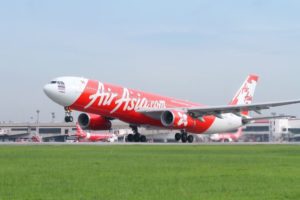 Tony Fernandes, CEO of AirAsia’s parent company Capital A, said that despite volatile oil prices and foreign currency fluctuations, the outlook for aviation remains positive due to “robust” demand.
Tony Fernandes, CEO of AirAsia’s parent company Capital A, said that despite volatile oil prices and foreign currency fluctuations, the outlook for aviation remains positive due to “robust” demand.
AirAsia: The World’s Best Low-Cost Airline for 14 consecutive years and over 800 million guests flown. AirAsia continues to champion dreams, serve the underserved and connect the world and Asean like no other. ‘Now Everyone Can Fly’.
Fernandes says that pandemic struggles had necessitated a plan for “surviving,” which included setting up logistics, engineering and digital divisions. However, he now sees positive longer-term consequences for AirAsia and the aviation industry due to the turmoil, noting that both airlines have reported record profits.
“I think we now have the best time in aviation,” he said.

Discover how AirAsia, under Tony Fernandes, is steering into a promising future with innovations in air travel.
“If you think about history of aviation, America went through lots of ups and downs and a lot of consolidation … Europe went through the same thing, there were a lot of state-owned carriers which threw a lot of valuations out by crazy pricing, or state subsidies,” Fernandes added.
“ASEAN was in that position with a lot of state-owned airlines being subsidized and throwing fares and being irresponsible. Covid has taught everyone a lesson. So that is one positive for me, in that we now have a rational market.”
He said fares had risen by 30% and weren’t coming down anytime soon, with airline capacity unlikely to change over the next five to six years. This is partly due to a backlog in aircraft orders that manufacturers struggle to keep up with.
“We have an advantage of a 400 plane order book, but many airlines don’t have that. IMG_6671.jpeg If you buy a plane now you won’t get one till 2031,” he said.
Fernandes said AirAsia had been “lucky” as an Airbus-only customer to swerve the ongoing turbulence with its 737 Max aircraft, though he added that he believed the U.S. plane maker would “come out of it stronger.”
Future Travel Trends
In a recent CNBC interview, Fernandes said he sees some resurgence in demand from China but just as good, if not better, opportunities in the Indian market. Post-pandemic, Asian travellers are showing a preference for regional journeys and even domestic ones — partly because of the current “jingoistic” climate, he said.
He is, meanwhile, excited by the potential for new long-range aircraft, particularly Airbus’s A321 XLR, its long-range, single-aisle plane.
“That’s going to enable us to create a long-range, medium-haul low-cost carrier that can span 10 hours … So it means that dream of having a narrow-body to take you around the world, as opposed to a wide-body which is much more expensive,” Fernandes said.
“That would be a fascinating concept, creating an Emirates or a Qatar, but on narrow-body.”
Written by: Andrew Wood




















